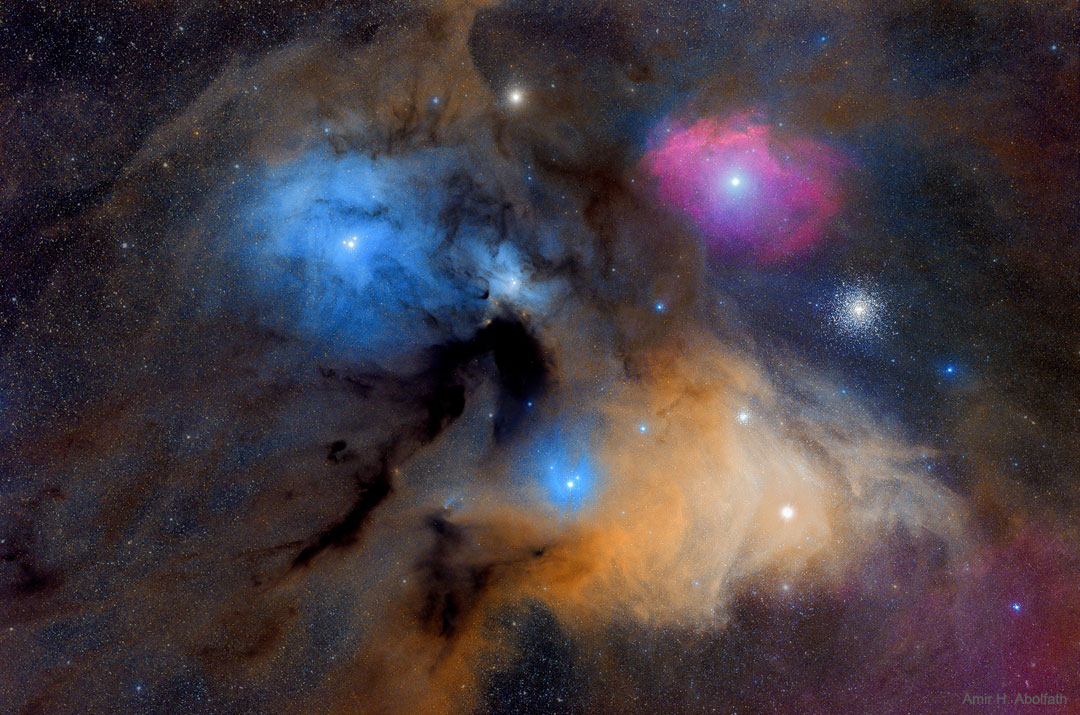2020年10月14日
The Colorful Clouds of Rho Ophiuchi
Image Credit & Copyright: Amir H. Abolfath
Explanation: The many spectacular colors of the Rho Ophiuchi (oh’-fee-yu-kee) clouds highlight the many processes that occur there. The blue regions shine primarily by reflected light. Blue light from the Rho Ophiuchi star system and nearby stars reflects more efficiently off this portion of the nebula than red light. The Earth’s daytime sky appears blue for the same reason. The red and yellow regions shine primarily because of emission from the nebula’s atomic and molecular gas. Light from nearby blue stars – more energetic than the bright star Antares – knocks electrons away from the gas, which then shines when the electrons recombine with the gas. The dark brown regions are caused by dust grains – born in young stellar atmospheres – which effectively block light emitted behind them. The Rho Ophiuchi star clouds, well in front of the globular cluster M4 visible here on the upper right, are even more colorful than humans can see – the clouds emits light in every wavelength band from the radio to the gamma-ray.
Astrophysicists: Browse 2,200+ codes in the Astrophysics Source Code Library
Tomorrow’s picture: open space
心宿增四星云的美丽云气
影像提供与版权: Amir H. Abolfath
说明: 心宿增四星云色彩缤纷的云气,突显了发生在该处的许多过程。蓝色区的辉光主要来自被反射的星光;这种区域,反射心宿增四恒星系统和附近恒星蓝色星光的效率,比红光来得高。地球白画的蓝天,其成因雷同。红与黄色区之辉光,则主要来自星云内原子与分子所辐射的光。云气附近的泛蓝恒星之星光,其能量高于明亮心宿二之星光,能把云气的电子撞出来,而当电子与云气复合时,就会辐射出辉光。深褐色区块是由形成于年轻恒星大气的尘埃微粒所造成的,它们遮掩了大部份来自后方的星光。心宿增四星云距离远小于出现在影像右上角的球状星团 M4,而色泽也比人类肉眼所能见要多很多,涵盖了电波到伽玛射线之间的所有波段。 (Ophiuchi读音为oh’-fee-yu-kee)
天体物理学家: 浏览天体物理学源代码库中的2200多个代码
明日的图片: open space



